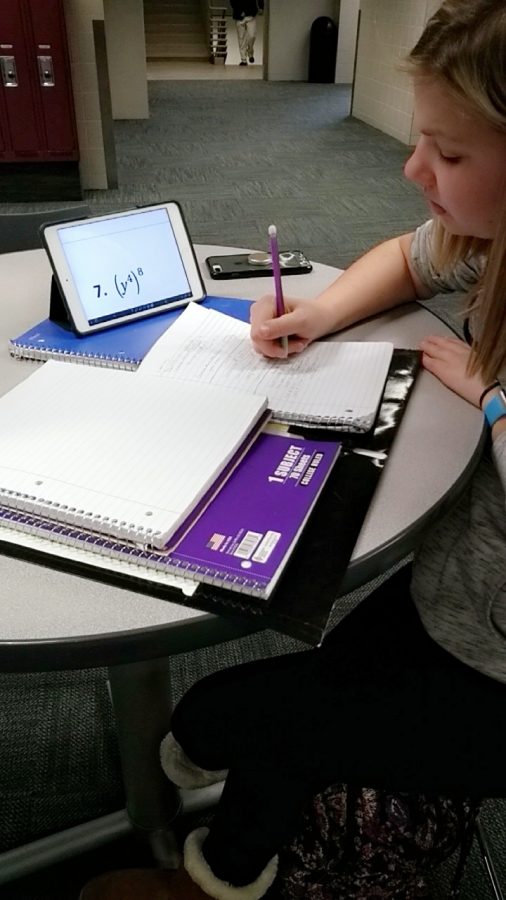Paper’s not dead yet, but iPads are here to stay
January 2, 2019
In a world where technology is becoming more prominent, paper hard-copy assignments are gradually receding into the shadows. For now, though, paper still plays a role in school life as much as iPads do. But does one option outrank the other?
iPads provide an added ease to classwork. Some students say they prefer all their textbooks on one device that’s easy to carry. Turning in assignments is easier as well, giving students the ability to turn in and teachers the ability to assign work from almost any location. Teachers also appreciate iPads for their resources and their accessibility for students.
Dr. Reikowski, who actively uses an iPad for her job every day, says that there are many reasons Eagan High School uses this technology. “We have looked at one-to-one – meaning one device to one student – for over fifteen years,” Reikowski said. “It seemed like we would be silly not to get [students] prepared for the twenty-first century.”
She continues on to compliment the efficiency of iPads. “It’s so efficient for doing your email. It’s so efficient for taking notes at a meeting, for pulling up a form and filling it in as you go. It’s just easy, lightweight, and mobile.”
While the notion of iPads is ideal in many ways, technology isn’t perfect. Many students complain of difficulties with apps, connecting to WiFi, or their teachers not being “tech-savvy.” Students also protest iPads because they may often forget to charge their device or lose it altogether. Teachers deplore these struggles with WiFi and charging as well. Some also find that iPads can serve as a distraction as much as a helpful tool.
Parents and guardians of students also have their oppositions. While Dr. Reikowski, for example, hears a lot of dissent and confusion from students, she claims she gets more complaints from parents. “[They say,] ‘When I look at Schoology, I don’t know what I’m looking at,’” Reikowski said. “I always say [to the parents], ‘Sit down with your student and have them take one class and show you everything that’s in there.’”
Paper, on the other hand, doesn’t need WiFi or to be charged. Many students mention that writing on paper is easier and improves their memory of the subject. Students and teachers also value the kinesthetic quality. Calculating math problems, peer editing work, and reading through text prove easier for several students on paper than on iPads.
Paper is becoming more outdated, however. Individual assignments are likely to be lost, damaged, or possibly eaten by pets. Paper is also commonly known to be manufactured from trees, a diminishing renewable resource. Plus, it brings a huge financial cost to Eagan High School.
“[Eagan High School] used to spend three times as much on copies as we spend now,” Reikowski said. “We used to spend around fifty to sixty thousand on copying and paper.” Reikowski added that although the cost is down, the school still spends about fifteen to twenty thousand dollars a year making copies, not including students printing their own copies.
Nevertheless, when all is said and done, a combination of both iPads and paper proves the most useful in today’s classroom. “It will be interesting to see where we are in ten years,” comments Dr. Reikowski. “I think it will be different… We’re going to be in a whole different place. [Using iPads in school] is just getting it started.”






